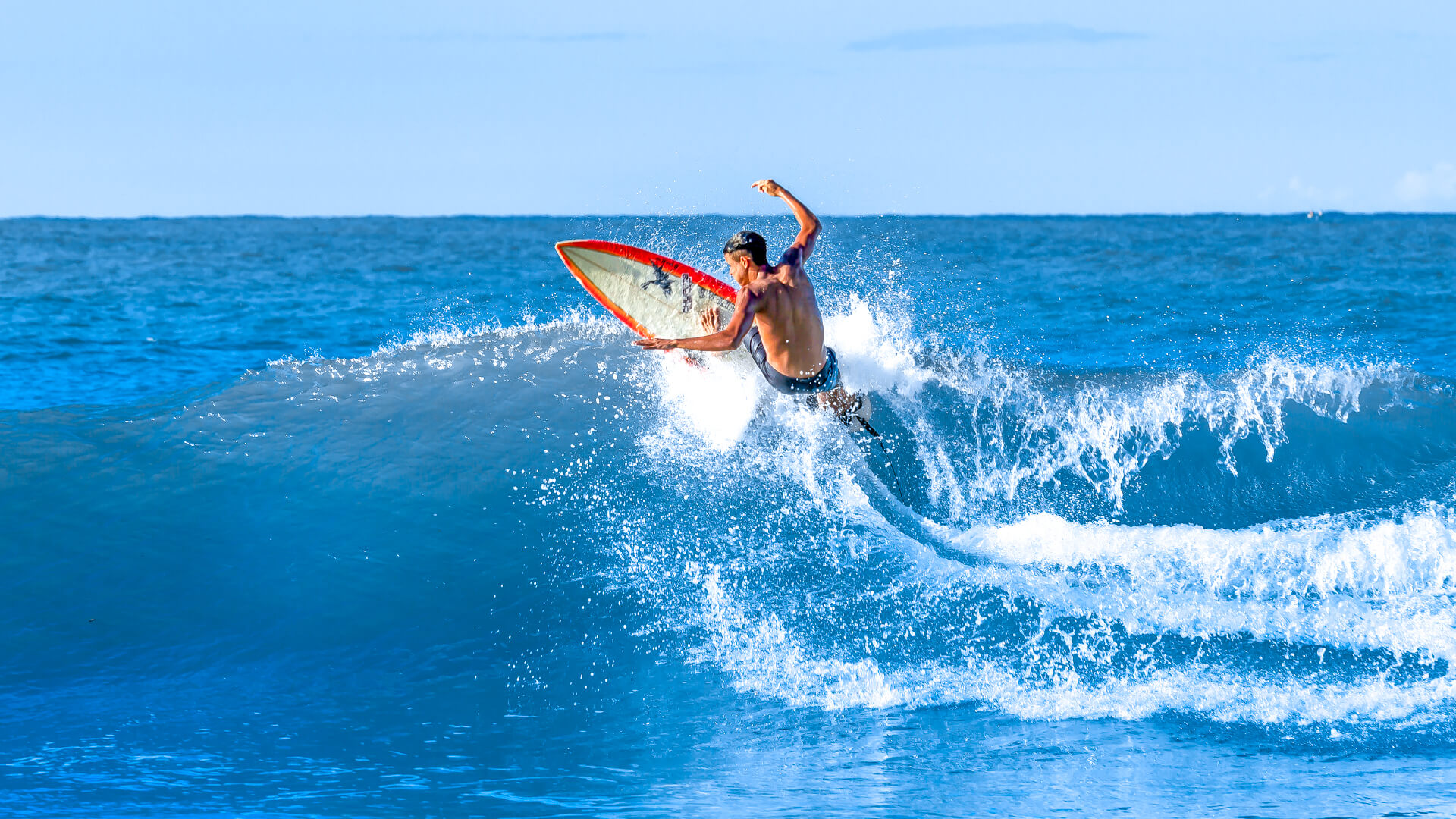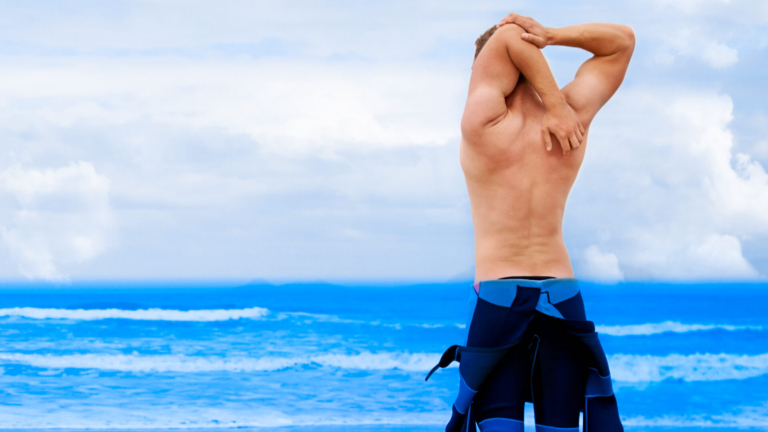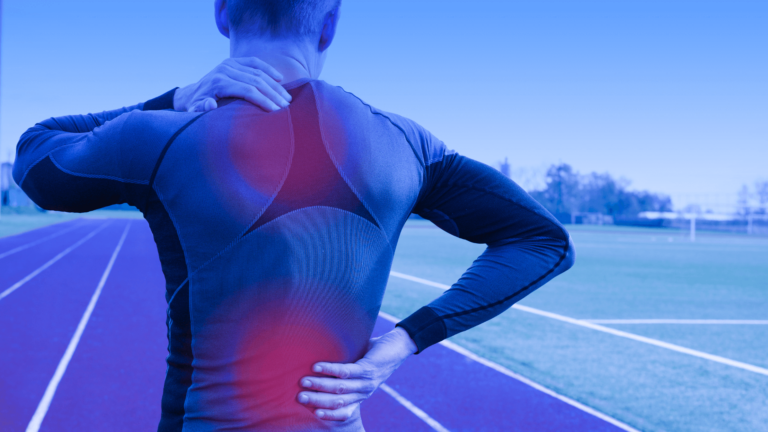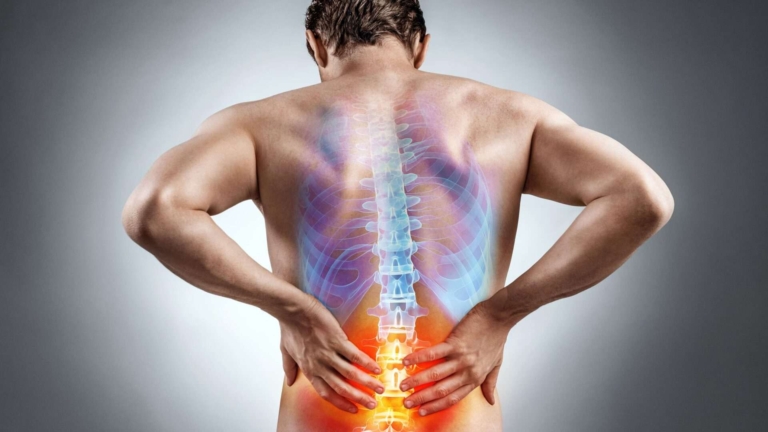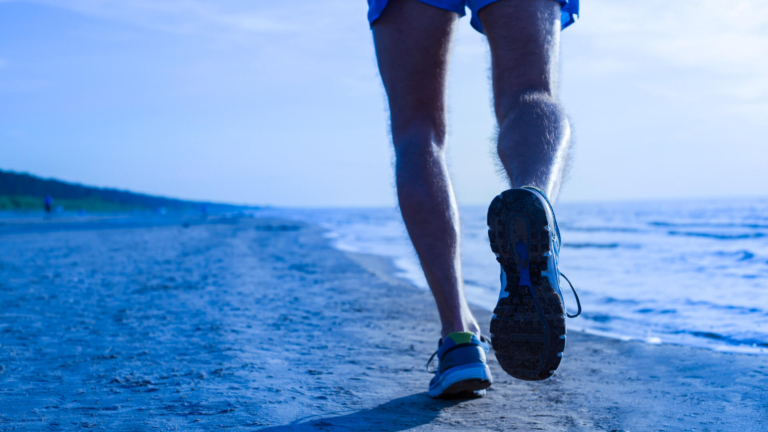Performance Surfing Fitness & Pro Surf Workout Programs Part 2
Surf Workout Programs
“The potential exercises that could be used for “surf fitness training” are endless. The goal however of surf workout should focus on improving the movement capacity of the human body in movement patterns that are relevant to surfing, and then to also improve the necessary energy systems.
Exercises must be specific to the individual, his weaknesses, his past injuries, his orthopedic needs, and his/her end goals.” – me (you like that!, I’m quoting myself).
General Surfer Physical Requirements:
- Flexibility
- Endurance
- Strength
- Power
- (there are more, but those cover the basic foundations)
Primary Movement Requirements:
- Squat
- Lunge
- Bend
- Rotation
- Push
- Pull
Those movement requirements would provide you with the most carryover to your surfing. If you become stronger and more powerful in those primary movements, and have enough flexibility and joint mobility to perform those without harm, then you can directly improve your surfing.
That is truly the key to quality surfing fitness and surf workout. Lose all the gimmicky bullshit exercises, and truly reflect on the movements you’re using, and whether they are improving those Primary Movement Requirements.
A case could be made for any exercise methodology and it’s potential carryover to surfing. Pilates will strengthen your core which would help your surfing. CrossFit will increase your overall endurance (metabolic conditioning) and likely improve your strength and power, which could improve your surfing.
Yoga will increase your flexibility, which will improve your surfing. Boxing would improve your upper body endurance and overall work capacity, which would improve your surfing.
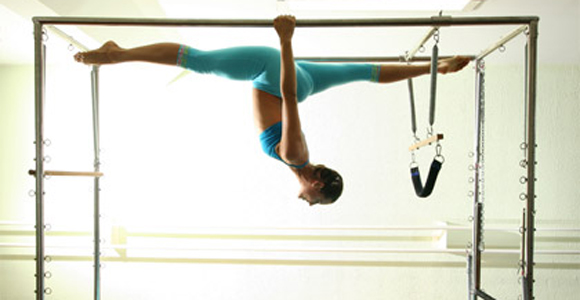
Do you get my drift here? Movement, exercise, and increasing your body’s capability will improve your surfing.
But those methods of training I just mentioned do not provide the most beneficial training, nor do they directly improve all of the movements that are essential to the art and sport of surfing.
Your training can be more efficient, and have more of a direct carryover to improving your time in the ocean…. And that is exactly what I do for people, on a daily basis, and also through Surf Athlete Training Program.
2 Full Surf Workout.
I give you some rep schemes, discuss potential progressions or regressions, and give you some background as to why I’m using specific movements.
These are drastically different workouts focusing on different aspects of strength, power, endurance, and flexibility. Depending on your exercise selection, speed of movement, rep ranges, exercise grouping, and rest periods, you can tailor a surf training workout to focus on your weak areas.
Do you need more endurance? Perform some circuits of large movement patterns with higher rep ranges. Could you use more strength? Become skilled at the major lifts and work on getting stronger.
Do you need more hip stability from a previous knee injury, or perhaps more work on your rotator cuff and shoulder stability? Add those movements.
Remember, exercise programs, whether for football or surfing workouts, need to be specific to the individual and what their body needs..
A BIT OF CONSISTENCY IN YOUR SURF WORKOUT
Stay diligent with a program. Perform it for at least 3 weeks. Constantly changing your workout is fun, and offers excitement, but it detracts from the potential benefit.
It’s certainly good to keep things fresh, but you should always keep a large portion of the program the same for a few weeks to reap the benefits, and actually induce physiologic change.
I have most of my clients working consistently on a portion of their surfing workouts program, and have a few parts of that program in which I allow for different movements each week to keep it all interesting.
SO MANY EXERCISES – WHICH TO CHOOSE

Even your choice of exercises are basically endless., but consider the actual carryover to your surfing based on the relevance of the exercise and it’s relation to the basic Primary Movement Requirements.
You can find a list in my last article of movements that I think most serious surfers should be proficient with. Article: Performance Surfing Workouts – Program Design
I recently asked all those surfers that have finished Surf Athlete Training Program(SAT) to use the information found in that last article (link above), and using the video information from what you’re reading now, along with everything they’ve learned from my surfing workouts program, and put together their own surfing workout programs.
If they sent them to me, I critiqued them. Take a look at these programs, as they’re great. This is what a follower of Surf Athlete Training Program put together.
STS Finisher – Surfing Workout
I’m absolutely impressed with that. He also sent me another 2 workouts, but I don’t want to give out all his programs, as their his intellectual property, and he invested time, and applied what I’ve taught him. Absolutely impressed. He’s used movements from STS, re-arranged some circuits, and added his own twist to things. Absolutely impressed!
This is by far, more comprehensive, and better designed, than most of the average personal trainers spouting bullshit about surf specific training. He’s stuck to using the Primary Movement Requirements, proper exercise order, beneficial core training,…. Damn it’s good! I’m like a proud father.
HERE’S MY CRITIQUES
Like I promised, I’ll give a few critiques, so not only can he be sure he’s doing the best quality training possible, but so you can learn a bit more about how I look at surfing workout program design.
First: keep in mind that this guy has now finished STS, so he’s been training consistently for months now, has down the required tissue release, has improved flexibility, strength, and core control, and has familiarity with these movements. So if you apply this stuff, proceed with some care, and focus on form and movement quality.
Second: he is writing this program in the same style and layout that I have written STS. So if you can’t quite follow it, or don’t understand how it’s laid out with reps /sets / etc., well I’m sorry, you’ll have to buy the Surf Athlete Training Program.
PROGRAM A Circuit 1 (he calls them Rotation)
Single Leg Cable Pull – perfect use of increased volume over time. He’s increased reps and sets over several weeks so he can properly track progress and increase strength.
One adjustment you could make would be to perform the movement on an unstable surface (bosu, balance disk, foam block), to help improve “stability” of the lower body. If you used this on an unstable surface, go a bit lighter with weight, and go for time rather than reps. 30-60seconds per leg, for 3 sets perhaps.
Standing Dumbbell Press: all good! If you wanted to focus more on endurance (surfer’s shoulders always need endurance), you could do 3-4 sets of 20. Also, with overhead presses, make sure your shoulders are optimally flexible. I’ve got lots of stuff in the category “shoulder health” on this site.
Loaded Reverse Lunge: again, good use of progressing volume (reps & sets) over time. You could start using a barbell held in the Front Squat position with this movement.
That would help increase back extensor loading and improve endurance of this muscle group (the muscles that run along your spine – think about more endurance for your paddling posture). Another option that wouldn’t necessarily focus on strength as much, but more hip flexibility – dynamic walking lunges.
SB Chest Press – Great movement. If performed with 1 arm, it adds a component of core stability, which is always a good thing.
Human Rhombus Pulls– Here’s a video: Cable Humans – awesome, great movement to improve posture and posterior shoulder endurance. Use them. I like how one week you’re doing 20reps.
I would like to see that happen another week as well. Another cool thing you could do would be to superset with another pulling movement just before the Humans.
You could rep out a few chinups or pull-ups, and then immediately perform the Humans. That could build a bit more pulling endurance, and with both of those movements combined, you’re hitting varying portions of the back and shoulder muscle groups – thats good!
Ab Wheel – great! Anterior core work is always great for surfers, as it improves the ability to control the lumbar spine from excessive extension. Surfers are always in lumbar spinal extension (paddling position), so it’s good to be strong through certain abdominal muscles like the internal and external oblique to help control the pelvis. Another option are hollow holds that gymnasts often use.
Ab Wheel and Cable Face-pull Circuit: nothing to add, except to say that performing a circuit of abdominal work and posterior shoulder work is a great idea. It keeps you moving non-stop, but helps you hit different muscle groups in the upper and lower body, so it’s very time efficient.
And both of those movements hit aspects that are important for surfers: anterior core control and posterior shoulder endurance, as well as proper posture and scapular positioning.
PROGRAM B Circuit 1
Box Jumps – good to see some lower body power development. Good use of progression of volume. It drives me nuts to see power exercises bastardised and done for highly excessive rep ranges. Power movements can apply a lot of stress to muscular and connective tissues.
So if overly used, and not applying the proper stretch or tissue release protocols, can offer a lot of room for injury. Anyways, another thing you could work on would be rotational jumps, to add some other dimension of movement. Or jump onto a bosu to improve balance skill.
Single Leg Glute Extension– you could perform these with the foot on a stability ball to improve lower body stability for a week or two. Another thing I’d like to see if your body allows for it would be some Kettlebell swings.
Where single leg glute extension work on hip strength and a bit of stability since it’s a single leg movement, a KB swing works on some lower body power and strength. You could do it for higher reps, or for time and help improve metabolic efficiency (endurance).
Circuit 2
Foot Elevated Pushups: – good upper body strength development. You could get super fancy and but something unstable underneath your hands as well.
Stability Lateral Ball Roll: great movement for core control and back durability. You could always switch this out for some standing rotational movement, but you’ve got the standing chops at the end, so all good there!
Circuit 3
Dumbbell Chops: Great rotational movement, and depending on weight used it could be speed or strength work. This could be progressed to some type of rotational Med-ball work, or regressed to cable chops to develop more rotational control. For those with some back issues, I’d have you work on horse stance or bird-dogs.
Single Leg Deadlift : awesome movement, and a single leg exercise which are always good for lower body durability and control. My only concern is that this is quite a complex movement.
Being towards the end of a program, the person and their nervous system are a bit fatigued, so very complex exercises do pose a bit of a risk. I wouldn’t really load it much here in terms of strength.
I’d opt for bodyweight, and go for more reps to work on endurance and balance, or do them on a slightly unstable surface. If you wanted to load it and help develop strength, I’d put that towards the beginning of the program.
OH MY GOD THAT WAS A LOT OF TYPING.
I hope that helps you. I think it should. Realize that professional level surf-training is for professionals. You need to find where you’re at before doing the highly dynamic exercise. Get flexible, improve your tissue health, build your basic strength capacity. And get in the ocean as much as you can.
If you have questions, want to know what you should be working on, or want to work one-on-one with some program design, email me [email protected]
Holler at me! Let’s get our surf workout on, let’s train!

